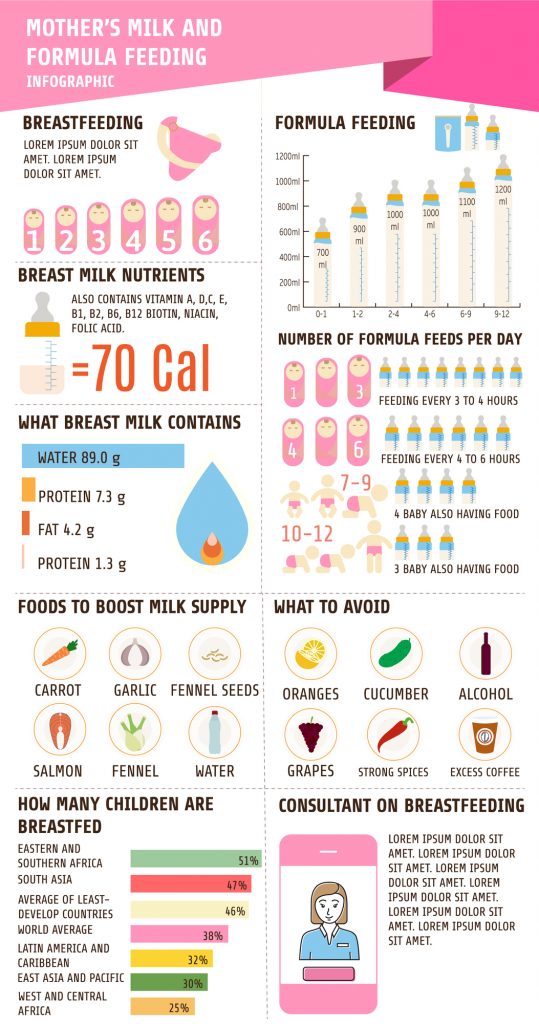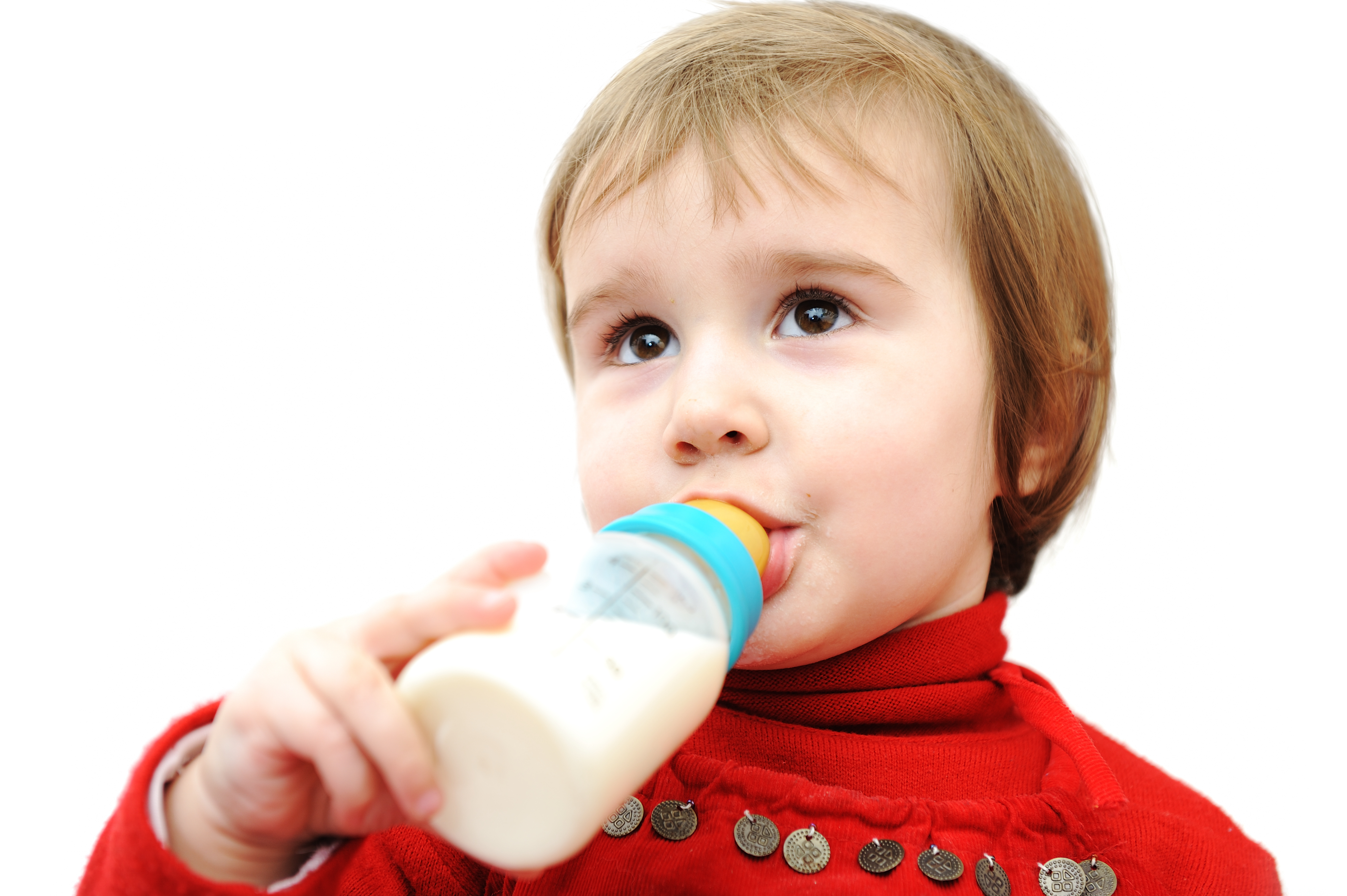Breastfeeding: Where Do I Start?
Congratulations you have a new baby! Having a new baby is hard enough but when you choose to breastfeed you sometimes feel that you made this experience even harder.
How Breast Milk Is Made
If you’ve every been pregnant or if you are pregnant now, you’ve probably noticed a metamorphisis in your bra cups.
The physical changes (tender, swollen breasts) may be one of the earliest clues that you have conceived.
Many experts believe that the color change in the areola may also be helpful when it comes to breast feeding.
What’s going on
Perhaps what’s even more remarkable than visible changes is the extensive changes that are taking place inside of your breasts.
The developing placenta stimulates the release of estrogen and progesterone, which will in turn stimulate the complex biological system that helps to make lactation possible.
Before you get pregnant, a combination of supportive tissue, milk glands, and fat make up the larger portions of your breats.
The fact is, your newly swollen breasts have been preparing for your pregnancy since you were in your mother’s womb!
When you were born, your main milk ducts had already formed.
Your mammary glands stayed quiet until you reached puberty, when a flood of the female hormone estrogen caused them to grow and also to swell.
During pregnancy, those glands will kick into high gear.
Before your baby arrives, glandular tissue has ,replaced a majority of the fat cells and accounts for your bigger than before breasts.
Each breast may actually get as much as 1 1/2 pounds heavier than before!
Nestled among the fatty cells and glandular tissue is an intricate network of channels or canals known as the milk ducts.
The pregnancy hormones will cause these ducts to increase in both number and size, with the ducts branching off into smaller canals near the chest wall known as ductules.
At the end of each duct is a cluster of smaller sacs known as alveoli.
The cluster of alveoli is known as a lobule, while a cluster of lobule is known as a lobe.
Each breast will contain around 15 – 20 lobes, with one milk duct for every lobe.
The milk is produced inside of the alveoli, which is surrounded by tiny muscles that squeeze the glands and help to push the milk out into the ductules.
Those ductules will lead to a bigger duct that widens into a milk pool directly below the areola.
The milk pools will act as resevoirs that hold the milk until your baby sucks it through the tiny openings in your nipples.
Mother Nature is so smart that your milk duct system will become fully developed around the time of your second trimester, so you can properly breast feed your baby even if he or she arrives
earlier than you are anticipating.
Breastfeeding is not as difficult as it looks or as you may have heard from others.
It is actually pretty easy and a very fulfilling way to nourish your newborn once you get the hang of it.
Remember as with most things practice makes perfect!
Breastfeeding is new to you and to your little one but with a little practice you two will become pros in no time!
During the first week of your baby’s life, your breasts will produce colostrum for your baby to drink.
Colostrum is rich in antibodies and aids the baby’s immune system.
It also helps him pass his first bowel movement, which is called meconium.
Meconium is black and tarry looking and is in the first few diapers after birth.
Then he begins to transition to a brown substance and after your milk comes in, it becomes a yellow, mustardy stool that is loose and watery.
Bottle-fed babies pass firmer, tarnish stools than breastfed babies.
After 24-48 hours after birth, your baby will start having wet diapers that will increase to two or three a day.
Your technique and positioning is a very important factor in ensuring that your breastfeeding experience is a great one.
There are a few different positions that can be used to make the experience more comfortable for you and baby.

Some of these positions include:
• Laying down –
Lay down on you side with pillows behind you to support your back.
Lay baby facing you with her head on a pillow your breast should be level with baby’s mouth.
Bend your legs with a pillow between your knees and then have baby latch on.
• Sitting Up –
Sit up either in bed or a comfortable chair or couch with pillows supporting your back and head.
Place a pillow on your lap and put baby on top of the pillow in your arms, you can rest your arms on the pillow to make it easier to bring baby up to your breast.
Bend your knees to make this even easier have baby latch on.
• The Clutch Hold –
This is also known as the football hold.
This position is also good when nursing twins as it allows mom to have a baby on each side.
Sit down and tuck your baby under your arm almost like a handbag.
Rest baby’s head on a firm pillow on your lap.
Ensure that baby’s feet are behind your back.
Your hand is at the back of baby’s neck, not on baby’s head.
Your arm will extend down baby’s back , guide baby to latch on
These are just a few of the positions that you can use there is also the cradle hold, clutch hold, and the transition position.
Do some research to learn these other positions to nurse your baby if you find the above positions uncomfortable.
While your baby drinks colostrum and then milk, you should listen for a pattern of “suck, suck, suck, swallow.”
This pattern will be rhythmic and there should be no “clicking” noises.
The “clicking” sound can indicate that your baby is not properly latched on and may not be getting enough milk from you.
If you start to hear this, you need to unlatch him and then reattach him.
If you continue to hear this sound after reattaching him several times, then you may want to consult a lactation consultant or your pediatrician.
After the first week of life, you should see 6-8 wet diapers each day and at least 3 bowel movements a day.
His urine should be clear and he should become more alert with each passing day.
Your baby should also be gaining weight and growing, as this is the surest way to tell that they are getting enough nutrition.
If you have two days in a row that deviates from the above indicators, then you should call your pediatrician immediately.
Breastfeeding problems, such as milk production difficulties, are not as common when using the PDF feeding method, but they do occur.
Even if you are well rested, eating healthy, have a pretty routine life, and your baby is growing and getting enough food, you still may experience a milk production issue.
Many things can cause production problems.
Here are just a few.
Some things that can affect your milk supply are:
• What mom eats
• How much mom rests and sleeps
• Her state of mind
• The age of the mom
• How many children you have
• Your desire to breastfeed
• Your nursing capabilities
• Your nursing techniques
• Baby’s latch on abilities
If you choose to breastfeed, it is very important that you take your baby for their check-ups as needed.
If you don’t, how will you know if he is getting enough milk and growing at the correct rate?
There is no way for you to tell that your child is getting enough nutrition for sure without your child being weighed.
Breastfeeding and Mastitis
Mastitis is perhaps the most distressing problem you may encounter when attempting to breastfeed.
You have been making it through the sleepless nights, the relentless feeding schedule, the diapers, the leaking…
when all of a sudden you want to stop breastfeeding.
Why?
Mastitis is the answer.
One of your breasts is engorged.
There is a slightly red patch which is painful to touch.
When the baby feeds it’s extremely uncomfortable.
After the feed your breast feels sore. You dread the next feed…
and then you begin shivering.
You think you have the flu. You have hot and cold sweats.
You have a thumping headache.
You retire to your bed and feel utterly miserable.
Visitors encourage you to give the baby a bottle so you feel like you’ve failed… but there is a solution.
In most cases mastitis affects only one breast at a time.
So what causes it?
Most often a new mum, whether or not she has previously breastfed, will suffer mastitis as a result of incorrect positioning or latching on of the baby.
Consequently the milk is not properly drained from the breast and a milk duct becomes blocked.
Other reasons include skipping feeds because you don’t want to feed in public or in front of visitors, or the baby is sleeping and you do not want to disturb him.
If you recognize the sensation of a blocked milk duct you may be able to avoid it progressing into mastitis by gently massaging your breast in the bath or shower.
Massage downwards towards the nipple.
You may feel a small lump which disappears as the duct becomes unblocked.
You can also try feeding the baby more often and again massaging the sore area towards the nipple as the baby drinks.
Another effective technique is to try expressing milk with the aid of an electric or hand pump.
However, if all your efforts are in vain and the duct does not unblock mastitis will often follow.
Mastitis is simply when the blocked duct becomes inflamed and possibly infected.
Current medical advice is to continue feeding from the affected breast even if it is infected.
The infection will not harm the baby.
However, the last thing you may want to do is to feed from the affected side at all as it is so painful.
This will only make things worse and you may end up with an abscess.
If this happens you will need to have the abscess drained by a doctor.
If you are worried about your baby drinking milk from the affected breast a good alternative is to express and dispose of the milk and to feed only from the unaffected side.
Your body will adapt. It will continue to supply enough milk for your baby from the unaffected breast.
And as long as you express regularly from the affected breast the milk supply will be maintained.
You produce breast milk on a supply and demand basis so there will always be enough.
When the infection clears up you can simply return to your usual feeding pattern.
If you do get mastitis and it does not clear up within a few hours you will probably require an antibiotic so speak to your GP.
Make sure to tell him you are breastfeeding so a suitable antibiotic can be prescribed.
To avoid a recurrence make sure you position the baby properly.
Ensure he is not sucking on just the nipple but that he has a good mouthful of the areola too.
Try to sit upright or if lying down do not lie on the breast.
Make sure the baby is tummy-to-tummy with you, his nose and mouth facing the breast and that he is not creating a blockage with his chin or a hand or arms.
Mastitis usually clears up completely within a couple of days so put it in perspective.
Don’t give up breastfeeding because you have mastitis.
Instead ensure you don’t get it again; position your baby correctly, feed on demand and avoid skipping breastfeeds.

Breastfeeding advantages
Breastfeeding has many advantages for both the baby and the mother. There are many substances in breast milk that can’t be found in cow’s milk.
More so, there are fewer complications associated with breast milk than with cow’s milk.
It has been advertised time and again that it is best for the babies if they are breastfed for the first six months even up to two years.
So why is breast milk so beneficial for the baby?
First of all, only breast milk contains colostrums which are essential for the baby to take.
Commercially-made milks cannot simulate the colostrums made by a mother.
The colostrums contain natural antibodies and immune globulins that are responsible for keeping the baby free from illness for the first few months of its life.
Another advantage breast milk has over cow’s milk is that it allows the mother to save as cow’s milk can be expensive.
The baby can better adapt to breast milk. Their feces are not smelly and they don’t have any difficulty defecating compared to cow’s milk.
Breastfeeding has also been approved to be one of the family planning methods that a family can observe.
Since breastfeeding has been given so much importance, many women have been made aware.
However, despite the awareness, many mothers still report of breast problems associated with lactation.
These problems are most often than not, associated with improper breast feeding techniques.
In order to lower down the incidence of breast related problems due to lactation, it is important that mothers observe the proper techniques of breast feeding.
Ultimately, both the mother as well as the baby will benefit from the proper observance of these techniques.
First of all, you need to prepare your breast for milk-production.
Second and what most mothers fail to realize is how to keep the nipple clean before the baby latches on to it for feeding.
When you plan to breast feed, you should avoid using soap on your nipple.
If this cannot be avoided, your nipple should be wiped using a soft cloth soaked in clean water to make sure your nipple is clean before your baby feeds from it.
Third and perhaps the most important step is to allow your baby to properly latch on to your nipple.
You will know when your baby is latched on properly when your baby’s mouth covers the entire areola and not just the nipples.
It is essential that your baby should latch on properly so that he or she can properly stimulate the “let-down reflex” of your breasts wherein the milk will go down the ducts and out your nipple.
There are various nipple exercises to perform in order to prepare your nipp[video_page_section type=”youtube” position=”default” image=”https://peekbaby.com/wp-content/uploads/2018/01/2018-01-01_02-26-44.jpg” btn=”dark” heading=”” subheading=”” cta=”BREASTFEEDING TIPS & ESSENTIALS THAT I WISH I’D KNOWN” video_width=”1080″ hide_related=”true” hide_logo=”true” hide_controls=”true” hide_title=”true” hide_fullscreen=”true”]https://www.youtube.com/watch?v=f2xlxRO-Y_Q[/video_page_section]







